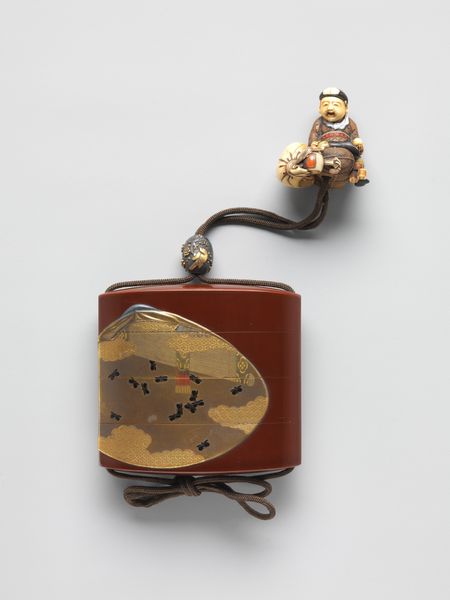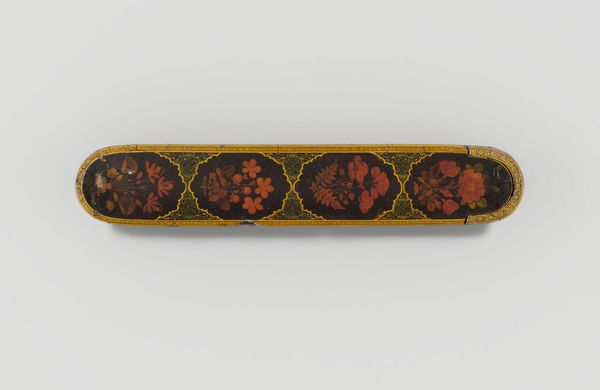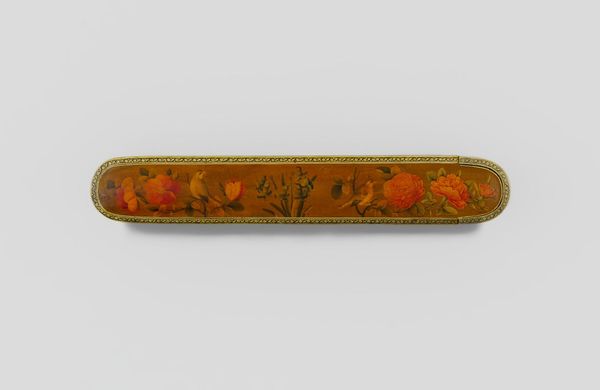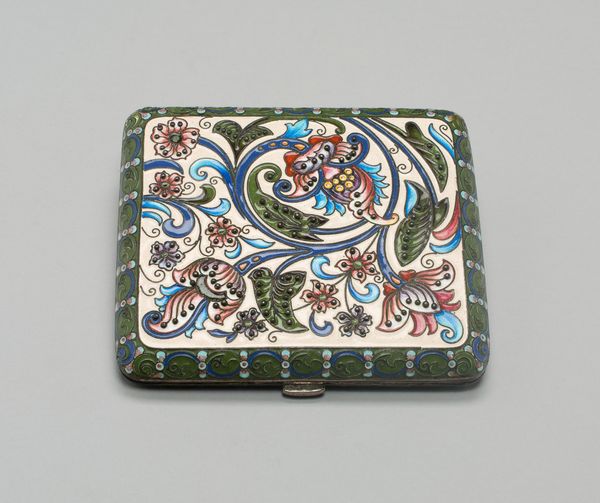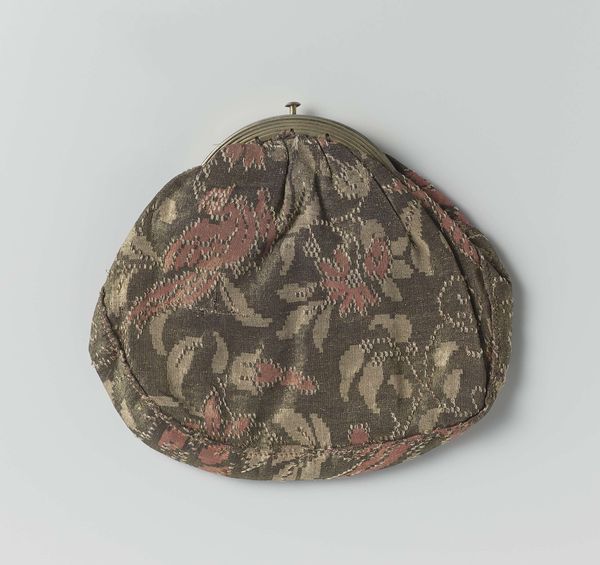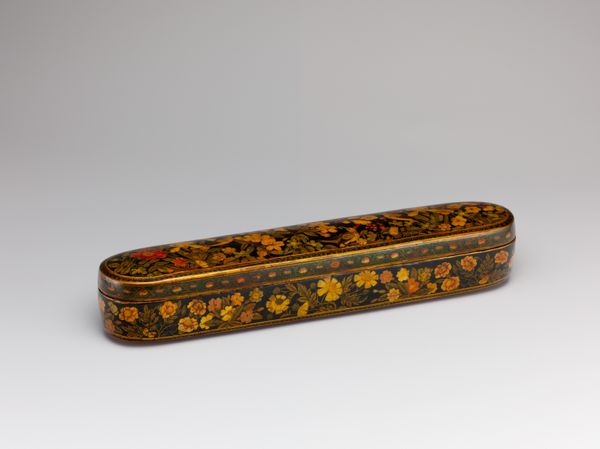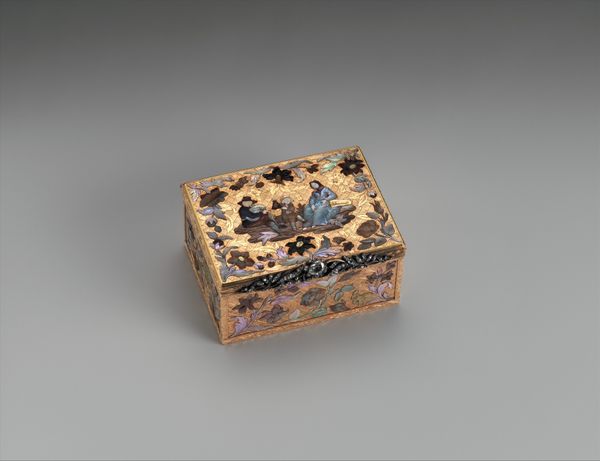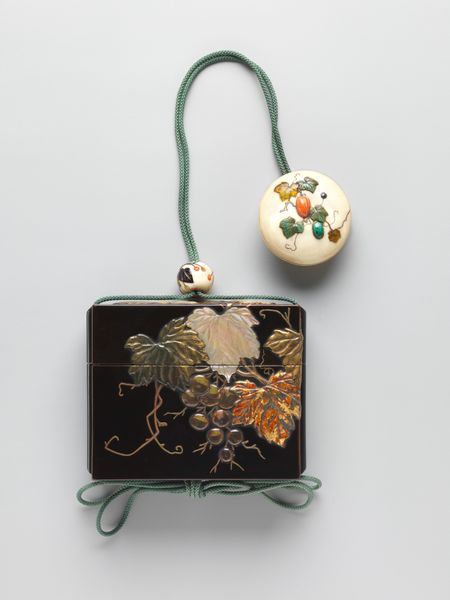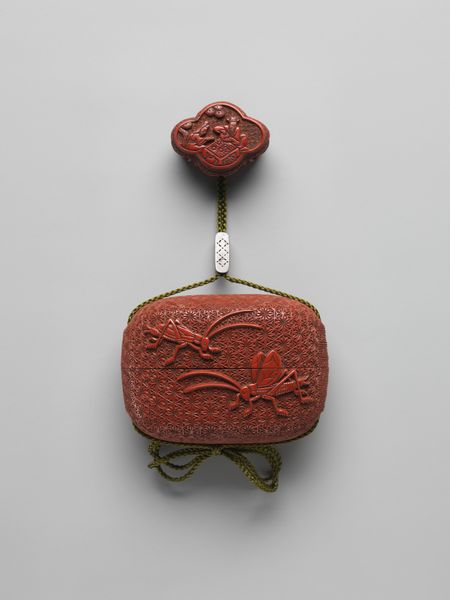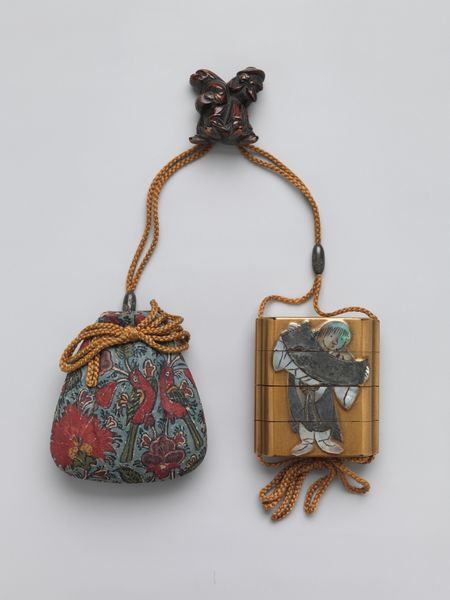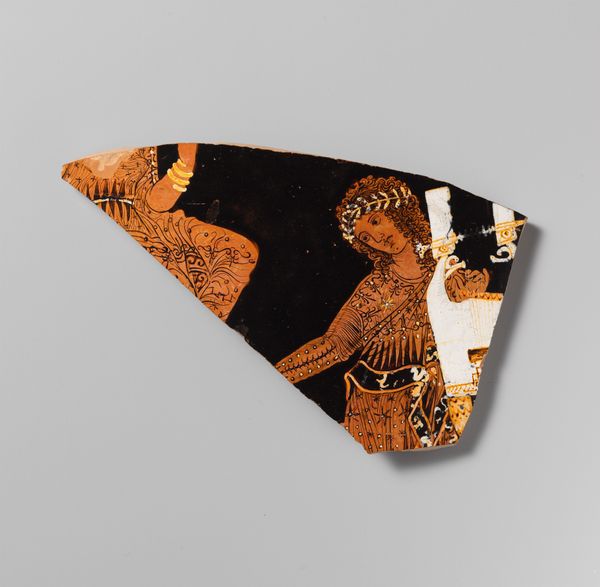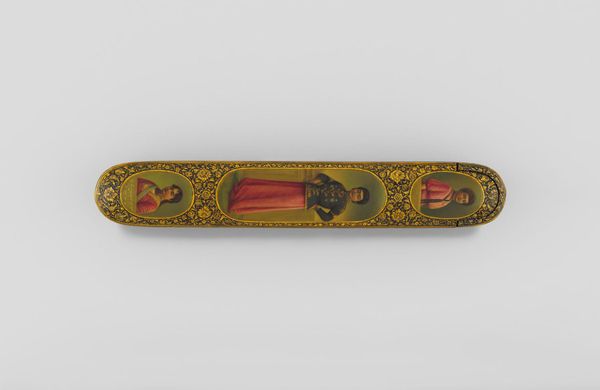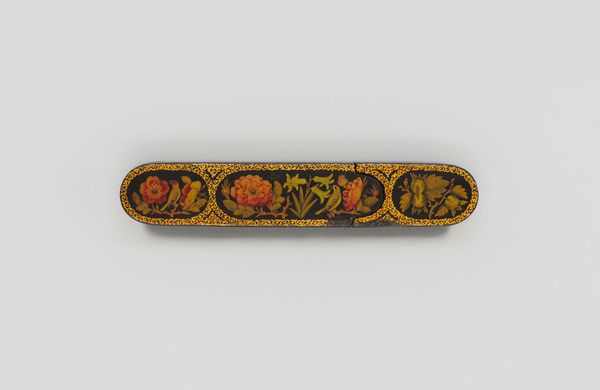
Tobacco Pouch with Nanban Figures c. 19th century
0:00
0:00
mixed-media, metal, textile
#
mixed-media
#
metal
#
asian-art
#
textile
#
miniature
Dimensions: 4 × 6 × 3/4 in. (10.16 × 15.24 × 1.91 cm)
Copyright: Public Domain
This tobacco pouch with Nanban figures was crafted by Hamano Noriyuki in Japan, sometime during his lifetime from 1771 to 1852. The pouch is a striking convergence of form and function, dominated by a semi-circular shape adorned with intricate metal fittings. The dark background contrasts sharply with the vibrant Nanban figures, drawing the eye into a complex visual narrative. The figures are not merely decorative; they function as signifiers within a structured cultural exchange. Each element from the figures' attire to their activities, can be interpreted as a sign within a semiotic system, reflecting the cultural codes and values of the period. Note how the artist skillfully uses the curve of the pouch to frame the composition, guiding our gaze across the landscape. This formal choice not only enhances the aesthetic appeal but also serves to structure the viewer's interpretation, emphasizing the pouch as an object of cross-cultural exchange.
Comments
minneapolisinstituteofart about 2 years ago
⋮
Gilt leather was introduced to Japan from Europe in the seventeenth century. Inspired by these imported goods, Japanese artisans experimented and developed new techniques, producing works such as this tobacco pouch that uses gold paint, gold foil, and multicolored lacquer to depict a scene of decidedly non-Japanese figures, fauna, and flora. The metal fitting was created by the prominent machibori (lit. town carver) Hamano Noriyuki, an independent metal worker who was not employed by a lord and is famous for his sword fittings.
Join the conversation
Join millions of artists and users on Artera today and experience the ultimate creative platform.
